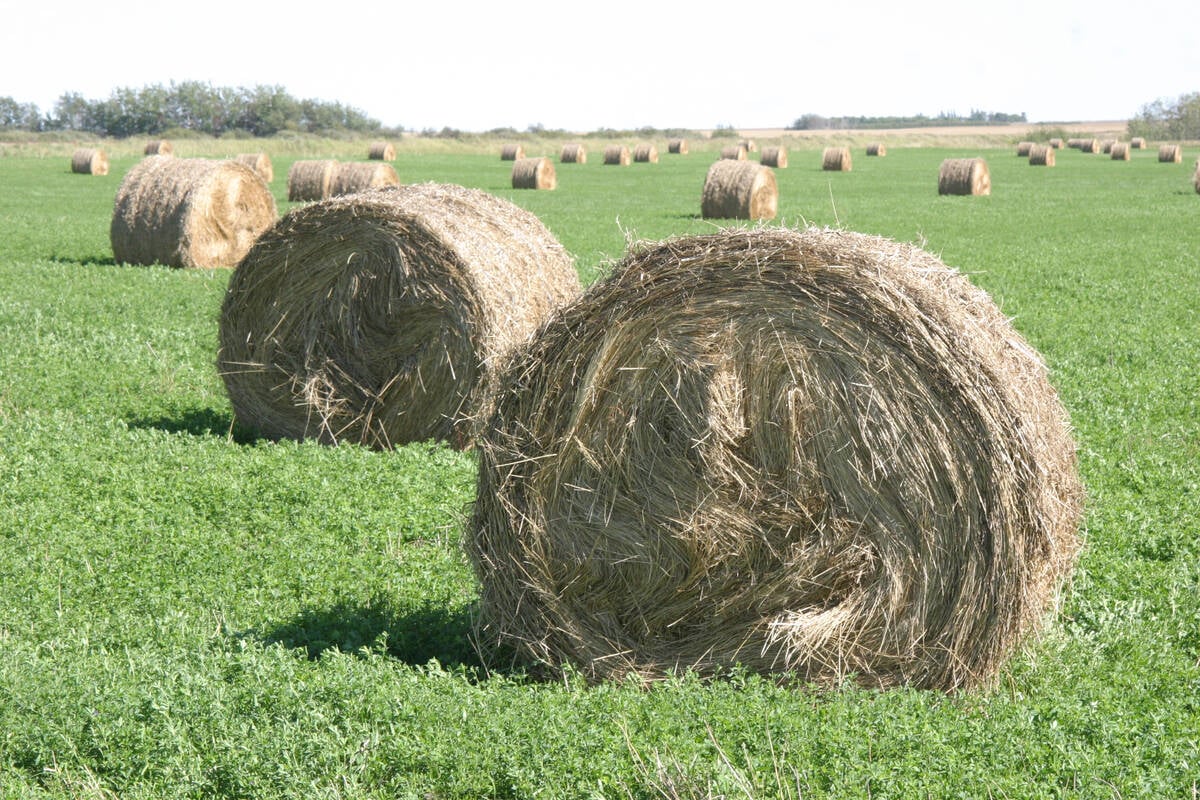RED DEER – Knud Pedersen has been buying Canadian Red Angus cattle for 15 years and sending the genetics back to his native Denmark. The reception was not always welcoming.
“I was in trouble because they didn’t want reds. I was the first person to have Red Angus,” he said after spending $5,100 for a bred heifer at the 37th annual Canadian Red Roundup sale Oct. 18 in Red Deer.
He bought the young female from Doug and Wendy Newton, owners of Heart Bar Cattle Co. of Crossfield, Alta.
Read Also

Breaking down successful winter feeding into six steps
It’s that time of year when it is important to start planning for a cow herd’s winter feeding program. Here are six steps I think are necessary to consider when getting your feed tested.
These days Red Angus are as well accepted as the traditional black strain in Denmark and Pedersen buys more every year from Canada.
He said he would have bought more at this sale, but the cattle were beyond his budget.
In Denmark, cattle are sold by private treaty rather than auction. English is not his first language so he found the fast chatter of the Canadian auctioneer hard to understand.
“They are difficult to follow, but I bid anyway,” he said.
“You get the right price at an auction sale.”
When Pedersen first starting buying Canadian cattle, he shipped them to Denmark by plane. Now because of BSE embargos, other disease issues and the expense, he buys the cattle here and ships the embryos home.
He plans to return next summer for the Angus World Forum with 15 others from Denmark. The female he bought at this sale qualifies for that show.
His purchase was above the average price at the sale, where 44 bred heifers averaged $4,247 and 38 heifer calves averaged $3,261.
Cattle were consigned from Ontario to British Columbia and sold across Canada, into five American states and Australia. Nine cows averaged $9,200, two bull calves averaged $7,100 and a yearling bull sold for $8,800.
In total, the 94 lots sold for $427,850 to average $4,551.
The event has been good to Clayton and Corrine Gibson, owners of Six Mile Red Angus at Fir Mountain, Sask.
They had the high seller of the sale with a cow born in 2004. A half interest went for $35,000 to a consortium of buyers from North Dakota and Minnesota.
The return to the American market is news they welcome. They live close to the U.S. border and because of the BSE trade suspension could not do business, even though American breeders are interested in Canadian cattle.
“They are eager for new genetics,” Corrine Gibson said.
The cow is expected to be shown at the Manitoba Livestock Expo, Nov. 6-9 in Brandon and at the Canadian Western Agribition in Regina from Nov. 24 -29.
With their partners, Ter-Ron Farms at Forestburg, Alta., the Gibsons won the supreme champion bull last year at Agribition with a bull named Fully Loaded, which was bought for a record amount at last year’s Red Roundup.
The Gibsons already had a supreme champion bull at the Prince Albert fair this summer so it is eligible to appear at the supreme competition Nov. 29.
They also have cattle that qualified for the world show to be held in Calgary next July. While the recognitions have been steadily coming, Gibson would not predict the outcome of this fall’s shows.
“We have been blessed and we won’t take it for granted,” she said.
Other high sellers included a half interest in a bred heifer from Blair’s Ag Cattle Co. at Lanigan, Sask., which sold for $21,000 to SooLine Cattle Co. of Midale, Sask.
The bull calf entry, born in February, went for $20,000 to Brylor Red Angus of Pincher Creek, Alta., and GVK Livestock of New South Wales, Australia.
For consignors to this event, prices were satisfying at a time of uncertainty.
“The cattle business is not an easy business for anybody, whether you have been in it for five years or 35 years,” said Bryan Mackenzie, sale manager and owner of Brylor Red Angus.
He said the event has regained its international stature with cattle, semen and embryos selling across borders.
Some of the U.S. purchases will leave the country because rules for exporting Canadian cattle are easing. However, each state veterinarian has slightly different requirements on identification and health.
“Every state is different with their health protocol but it is relatively easy to export,” Mackenzie said.















